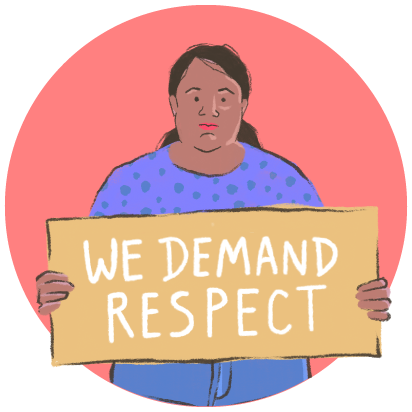SUPPORT
Mutual support, the solidarity of the feminist and women's movement, of the National Mechanisms and of key sectors, is essential, as domestic workers are affected by multiple and intersecting structural vulnerabilities and their involvement in the struggle for rights makes them vulnerable to loss of their sources of income. Therefore, an important challenge is the generation of mechanisms that provide the economic capacities to resist in the event of a possible abuse or breach of rights, the ability to survive not having a job.
In addition, historical discrimination means that working women who have worked all their lives as domestic employees, even though their right to social security is recognized today, do not have the possibility of retirement. Therefore, it is important to put pressure on organizations to establish transitional or compensatory measures.














